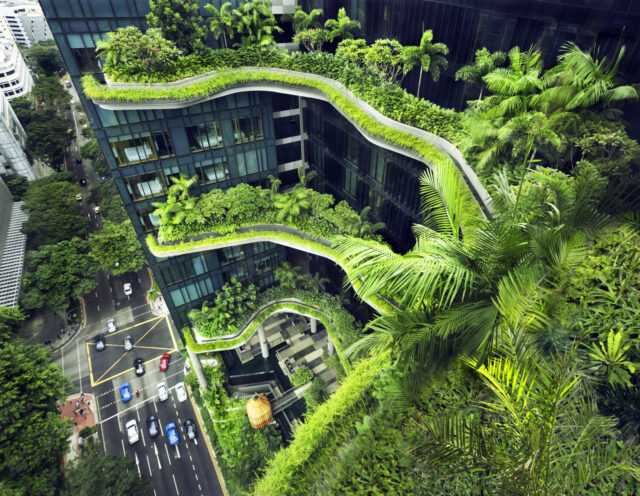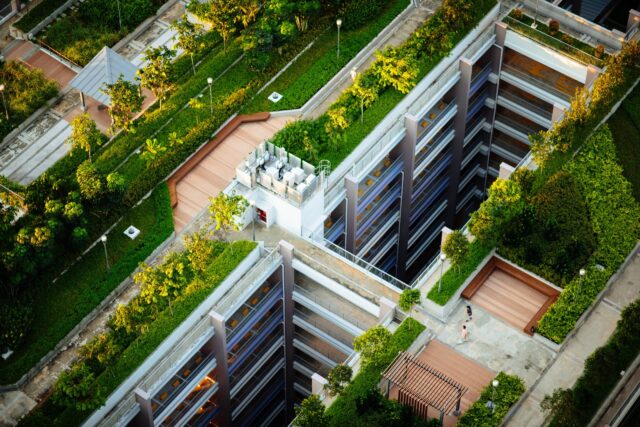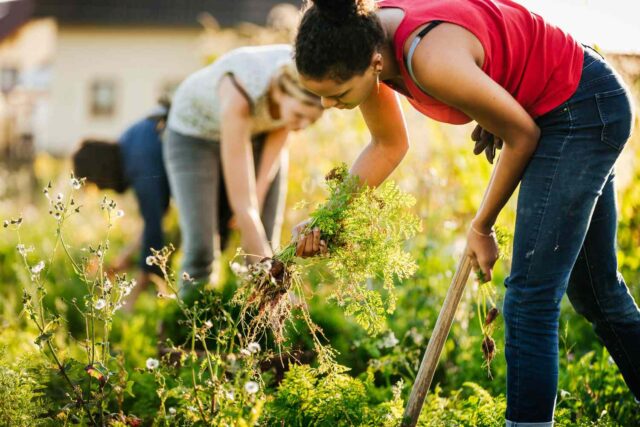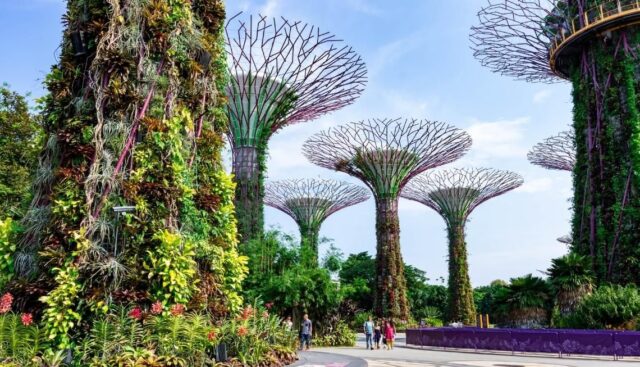
Green living is at the forefront of Singapore’s urban landscape, where the conscious effort to reduce environmental footprints is paramount. This city-state, one of the world’s most densely populated areas, faces unique challenges in its sustainability journey. However, Singapore has emerged as a role model, seamlessly blending modernity with eco-consciousness.
This commitment to green living is visible in various aspects, from urban planning to food sourcing and architectural designs. Singapore’s embrace of sustainable practices not only enhances the quality of life but also sets an example for other densely populated urban centers worldwide.
The Role of Fruits and Vegetables in Sustainable Living

Choosing locally sourced fruits and vegetables isn’t merely a dietary preference; it’s an impactful environmental choice. By opting for locally grown produce, Singaporeans effectively reduce the carbon footprint associated with their meals. This not only guarantees fresher and more nutritious food but also significantly curbs emissions linked to long-distance transportation.
Furthermore, supporting local farmers bolsters a sustainable food supply chain, ensuring that agricultural practices align with Singapore’s overarching sustainability objectives. The simple act of consuming local produce becomes a vital part of reducing the city’s environmental impact while fostering a sense of community and shared responsibility.
Singapore’s Thriving Urban Agriculture Scene
Singapore’s limited land resources haven’t deterred its pursuit of urban farming ambitions. Throughout the city, innovative initiatives have transformed rooftops, vacant lots, and building facades into lush green spaces. Community gardens, such as those in Tampines and Bukit Batok, empower residents to participate in the ‘grow your food’ movement, fostering a stronger sense of community and sustainability.
Pioneering efforts by organizations like Edible Garden City have turned underutilized spaces into thriving urban farms, contributing not only to Singapore’s food security but also to the reconnection of urban dwellers with the land. These initiatives exemplify Singapore’s commitment to innovative solutions that address urban challenges while prioritizing sustainability and community engagement.
Sustainable Architecture: The Green Building Movement in Singapore
Singapore’s skyline, dotted with skyscrapers, tells a tale of architectural marvels that prioritize sustainability. The city’s Building and Construction Authority (BCA) has been instrumental in promoting green building designs. Landmarks like the Oasia Downtown Hotel, with its verdant facade, and the solar-powered School of the Arts, exemplify this commitment. These structures, such as JDen Condo, incorporate energy-efficient practices, use sustainable materials, and often feature green spaces, reducing the urban heat island effect.
Connecting Green Spaces and Sustainable Living

Beyond architecture, Singapore’s commitment to green living is evident in its urban landscape. The city is interspersed with parks, green corridors, and rooftop gardens that provide not only a visual treat but also serve as sanctuaries for nature enthusiasts. Spaces like the iconic Gardens by the Bay offers residents an escape from the concrete jungle, promoting mental well-being and providing a space for relaxation and recreation.
Moreover, these green oases play a crucial role in biodiversity conservation, creating habitats for various flora and fauna, and reminding Singaporeans of their harmonious coexistence with nature.
The Health Benefits of a Plant-Based Diet
Singaporeans are increasingly recognizing the health advantages of a plant-based diet. Embracing more fruits and vegetables in daily meals not only adds color to the plate but also reduces the risk of chronic diseases such as heart disease and diabetes. These nutrient-rich foods aid digestion, boost the immune system, and contribute to maintaining a healthy weight.
To incorporate more greens into your diet, consider starting with familiar local produce, experimenting with different cuisines to discover exciting new flavors, and gradually increasing your intake. It’s a simple yet effective way to enhance overall well-being.
Sustainable Living Practices for Homeowners
Sustainable living in Singapore extends beyond diet—it encompasses various facets of daily life, including choices made within one’s home. For homeowners, sustainability involves selecting energy-efficient appliances, installing water-saving fixtures, and adopting waste-reduction practices.
Simple changes, such as switching to energy-efficient LED lights, incorporating a rainwater harvesting system, or composting organic waste, can collectively make a significant difference in reducing one’s ecological footprint. Additionally, government initiatives like the HDB Greenprint offer residents valuable resources and guidance to create eco-friendly homes, making it easier than ever to embrace sustainable living.
Community Initiatives for Green Living

Singapore’s green living movement is propelled by its vibrant communities. Residents actively engage in initiatives like beach clean-ups, sustainability workshops, and tree-planting drives. Organizations like Green Drinks Singapore and Sustainable Living Lab are at the forefront of championing community-driven sustainability projects, fostering a sense of collective responsibility. By participating in these initiatives, Singaporeans not only contribute to the city’s green vision but also build a stronger sense of community and shared commitment to a sustainable future.
Renewable Energy
Singapore’s commitment to sustainability extends to its energy sector. The city-state has been making significant strides in harnessing renewable energy sources, demonstrating a forward-thinking approach to reducing its carbon footprint. Among these initiatives, solar power and offshore wind farms have taken center stage.
In recent years, Singapore has increasingly turned to solar energy as a clean and abundant resource. The government has launched multiple solar energy projects, including rooftop solar panels and large-scale solar farms. These projects not only generate clean electricity but also reduce the city’s reliance on fossil fuels. Singapore’s dedication to expanding its solar capacity showcases its holistic approach to sustainable energy solutions.
Eco-Friendly Transportation
Beyond public transit, Singapore promotes eco-friendly personal transportation options. Electric vehicles (EVs) are gaining popularity, thanks to incentives such as tax rebates and charging infrastructure expansion. The city’s commitment to cycling infrastructure, including dedicated bike lanes and bike-sharing programs, encourages residents to embrace sustainable commuting methods. These initiatives not only reduce air pollution but also promote cleaner and healthier transportation choices.
Green Certification

Singapore’s commitment to sustainability is further exemplified by its green certification programs. The Green Mark certification, for instance, recognizes buildings and businesses that prioritize eco-friendly practices. These programs incentivize sustainable architecture, energy-efficient operations, and environmentally responsible practices. By offering recognition and benefits to certified entities, Singapore encourages widespread adoption of green practices, further reducing its environmental impact.
Conclusion
Singapore’s journey towards green living exemplifies its forward-thinking approach to urban development. By seamlessly integrating sustainability into daily life, the city serves as a blueprint for metropolises worldwide. As residents, embracing local produce, appreciating green architecture, and adopting eco-friendly practices can lead to a healthier, more sustainable lifestyle.
Let’s collectively champion green living, making Singapore not just a ‘Garden City’ but a ‘Sustainable City’ for generations to come. It’s a vision where urbanity and nature harmoniously coexist, setting an inspiring example for the rest of the world.









